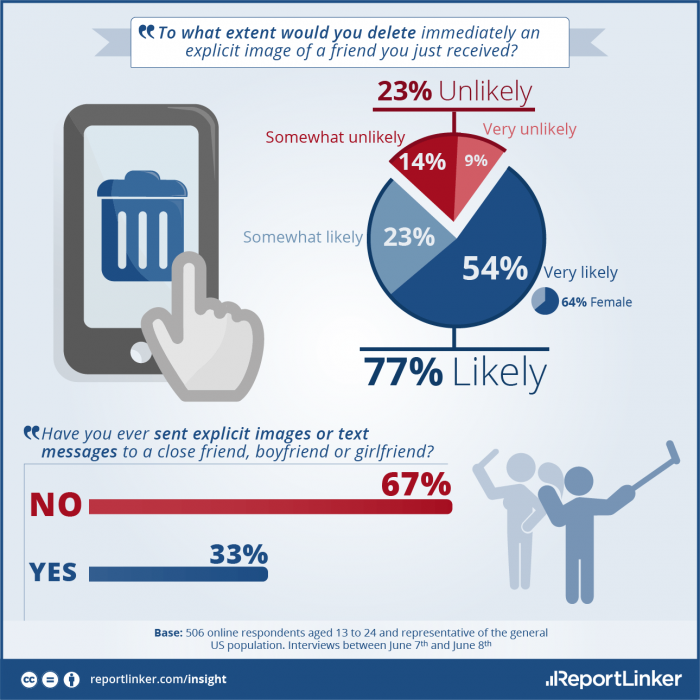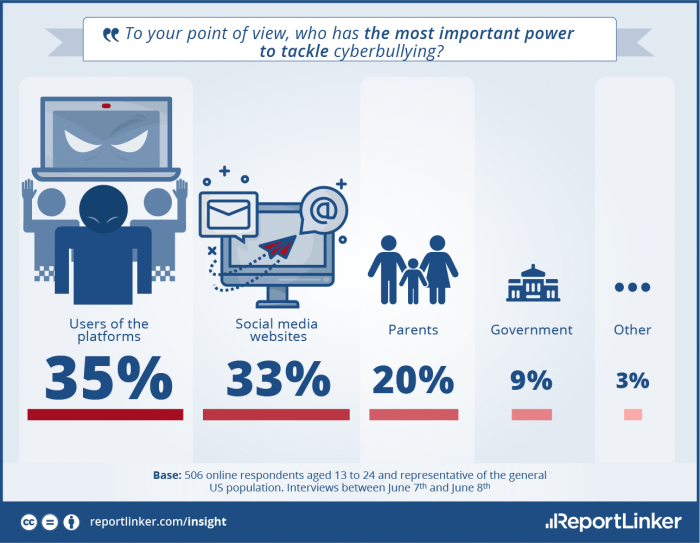There’s a dark side to all things, no matter how bright. Social media have their dark side, and in the shadows there’s something that especially plagues the young, impressionable minds and emotions of teenagers and very young adults in our time of unprecedented mobility of both people and information, something called “cyberbullying”.
Cyberbullying is not a video game fantasy. It’s so real that in the state of Massachusetts a woman was, not long ago, convicted by a judge of the crime of manslaughter because she had, as a teenager, used social media to encourage her suicidal boyfriend to kill himself (which he eventually did).
ReportLinker recently collated and analyzed survey responses from U.S. teenagers (13-18) and very young adults (ages 18 – 24) on the topic of cyberbullying. Their responses may open your eyes if you’re never thought seriously about this matter before.
One modern phenomenon among young people, or “Millennials”, that emerges and is prone to cyberbullying is the one known as “sexting”. This means sharing sexually explicit images or text using social media or texts. One-third of respondents said that they had sent sexting communications to someone. Meanwhile, 77% of respondents said that if the image was unwanted they would immediately delete it, and among those 64% of female respondents said that they’re “very likely” to take that action.
Females are also significantly more likely than males to be “very concerned” about being victimised by cyberbullying attacks. While 71% of respondents said that they’re concerned, 45% of those “very concerned” are females, while 38% of male respondents claimed to be not at all concerned.
The hard reality of cyberbullying was put on display when 38% of respondents said that they or someone very close to them have been actual victims of cyberbullying. While 61% of respondents cited embarrassing images (“revenge porn”) or threatening messages as the main vessel for their cyberbullying experiences, more than one-third cited attacks on their race or their gender (and possibly their sexual orientation) as the main vessel.
It may come as a surprise that it’s phone-to-phone text messaging most often cited as the leading (“worst”) medium for cyberbully attacks (24%). However, social media giant Facebook is quite close at 23% of respondents, including 33% of very young adults.
What’s to be done to fight back against or resist cyberbullying? Well, U.S. youths don’t have all that much faith in their parents, and they’ve got far less faith in government to help them. They say that it’s the social media platforms and their users themselves who have the power to take on and thwart cyberbullies.
However, three-fourths of respondents said that they’re psychologically and pragmatically equipped to handle any cyberbully attack, and 38% would talk about it with their parents while 27% would turn to close friends. Talking to teachers or police authorities, though, wasn’t seen as a leading option.
It seems that cyberbullying is a form of personal vendetta to be handled on a personal level.
Find a Home-Based Business to Start-Up >>> Hundreds of Business Listings.





















































